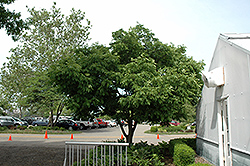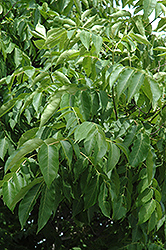It's all about ...
plants

Height: 40 feet
Spread: 40 feet
Sunlight:
![]()
![]()
Hardiness Zone: 5a
Other Names: Euodia hupehensis, Bee-bee Tree, Bee Bee Tree
Description:
A medium sized tree with lateral branching; leaves have an unpleasant smell when crushed; pretty clusters of white flowers in summer followed by clusters of reddish-brown fruits that turn purple black; an interesting accent tree
Ornamental Features
Korean Evodia is clothed in stunning corymbs of fragrant white flowers at the ends of the branches from mid to late summer. The fruits are showy brick red drupes carried in abundance in early fall. It has dark green deciduous foliage. The glossy pointy pinnately compound leaves do not develop any appreciable fall colour.
Landscape Attributes
Korean Evodia is a deciduous tree with an upright spreading habit of growth. Its average texture blends into the landscape, but can be balanced by one or two finer or coarser trees or shrubs for an effective composition.
This tree will require occasional maintenance and upkeep, and should only be pruned after flowering to avoid removing any of the current season's flowers. It is a good choice for attracting birds and bees to your yard. Gardeners should be aware of the following characteristic(s) that may warrant special consideration;
- Invasive
Korean Evodia is recommended for the following landscape applications;
- Accent
- Shade
Planting & Growing
Korean Evodia will grow to be about 40 feet tall at maturity, with a spread of 40 feet. It has a low canopy with a typical clearance of 3 feet from the ground, and should not be planted underneath power lines. It grows at a slow rate, and under ideal conditions can be expected to live for 60 years or more. This is a dioecious species, meaning that individual plants are either male or female. Only the females will produce fruit, and a male variety of the same species is required nearby as a pollinator.
This tree does best in full sun to partial shade. It does best in average to evenly moist conditions, but will not tolerate standing water. It is not particular as to soil pH, but grows best in rich soils. It is somewhat tolerant of urban pollution. This species is not originally from North America.
This plant is not reliably hardy in our region, and certain restrictions may apply; contact the store for more information.

